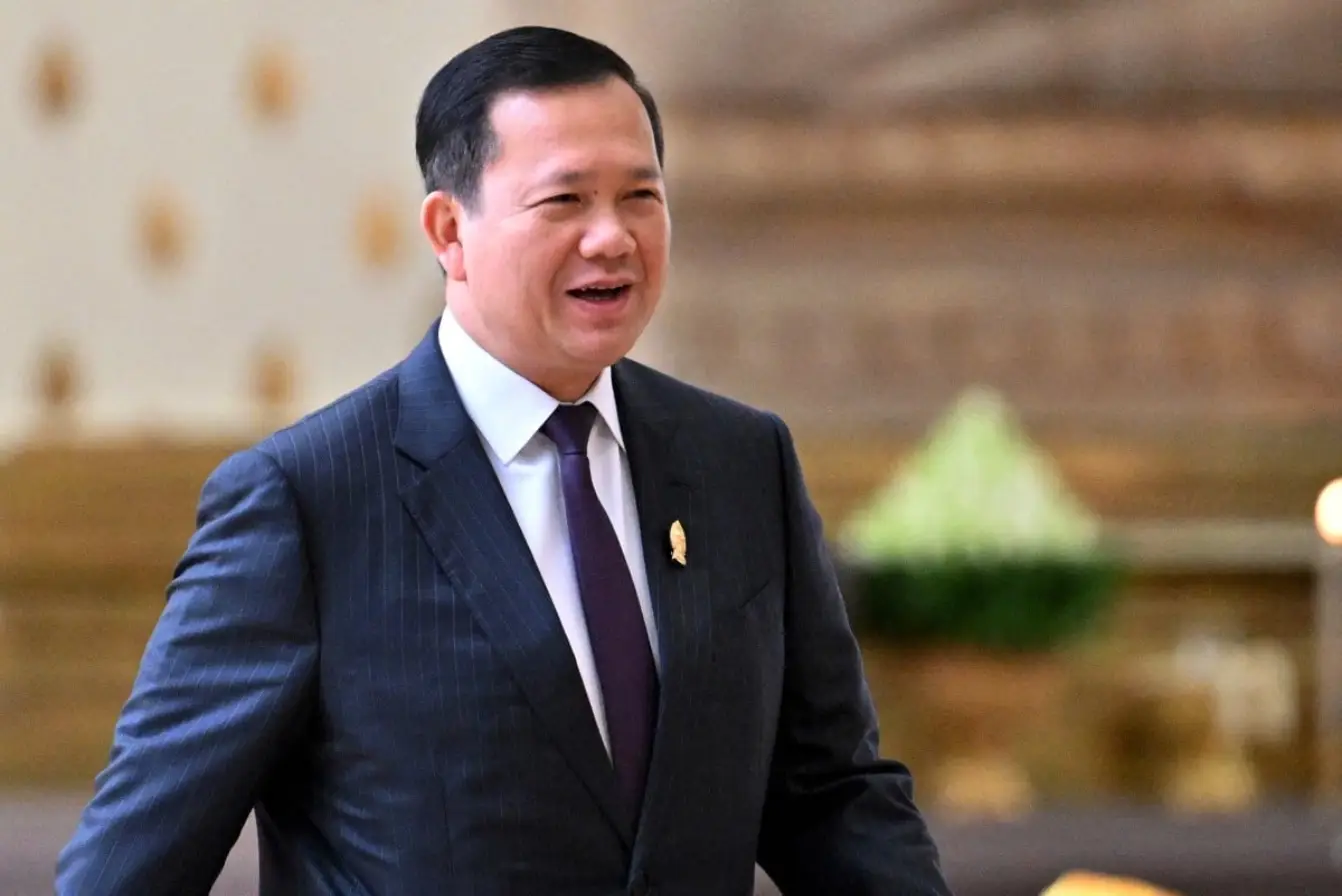Cambodia has taken a decisive step to resolve long-standing border disputes with Thailand by seeking adjudication through the International Court of Justice (ICJ). The contested areas, surrounding the historic Ta Moan Thom, Ta Moan Touch, and Ta Krabei temples in Banteay Meanchey province, have been a flashpoint for tensions between the two nations for decades. With a recent clash resulting in the death of a Cambodian soldier, the urgency to find a lasting solution has intensified, as Senate President Hun Sen warned of the risk of perpetual conflict akin to the Gaza crisis if the issue remains unresolved.
Escalating Tensions and a Call for Legal Resolution
The Cambodian government’s decision to approach the ICJ has been met with broad support from economists and tourism experts, who see it as a critical move to preserve bilateral relations. During a joint meeting of the National Assembly and Senate on June 2, 2025, Hun Sen emphasized the failure of a 2000 memorandum of understanding between the two countries, which has not yielded a resolution in 25 years. “If we don’t let the court decide, this issue will be like Gaza between Palestine and Israel — never resolved, with constant fighting, whether small or large. Why fear going to court if we are sincere?” he questioned.
The border skirmishes, including the latest incident that claimed a Cambodian life, underscore the volatility of the situation. While both governments have refrained from escalating the conflict into broader diplomatic or trade disputes, the potential for disruption looms large. Experts warn that without a swift resolution, the disputes could cast a shadow over the robust economic and cultural ties that define Cambodia-Thailand relations.
Trade at Stake: A Growing Economic Partnership
Trade between Cambodia and Thailand has flourished in recent years, reaching $4.29 billion in 2024, a 15.5% increase from the previous year’s $3.71 billion, according to the General Department of Customs and Excise (GDCE). Cambodian exports to Thailand, primarily agricultural products like cassava, corn, mangoes, pepper, and beans, totaled $844.9 million, up 3.3%. Meanwhile, imports from Thailand, including construction materials, electrical appliances, and agricultural machinery, surged to $3.44 billion, an 18.9% rise, resulting in a trade deficit of approximately $2.6 billion for Cambodia.
In the first four months of 2025, bilateral trade continued its upward trajectory, reaching $1.49 billion, a 6.4% increase compared to the same period in 2024. However, Cambodian exports dipped slightly by 2.9% to $327.78 million, while imports from Thailand grew by 9.4% to $1.17 billion. This imbalance highlights Cambodia’s dependence on Thai goods, making stability in bilateral relations all the more crucial.
Lor Vichet, vice-president of the Cambodia Chinese Commerce Association (CCCA), expressed cautious optimism about the situation. Speaking to a local outlet on June 3, he noted that neither country has initiated a boycott of the other’s products, suggesting that trade flows remain largely unaffected for now. “Since neither country has declared a boycott of the other’s products, there’s no significant indication yet of a decline in trade flows between the two nations. Also, the recent border skirmish was not the first of its kind” he said. Vichet added that a quick resolution through international legal mechanisms would be ideal to minimize disruptions.
He also pointed to Cambodia’s favorable investment climate as a buffer against potential economic fallout. “One of Cambodia’s strongest investment advantages, which many other countries do not offer, is that foreign investors can own 100% of their business and repatriate all their profits” he explained. With political and macroeconomic stability, a young workforce, and infrastructure like the deep-sea port in Preah Sihanouk province, Cambodia remains an attractive destination for investors, including those from Thailand.
Tourism Under Threat: A Vulnerable Industry
While trade has shown resilience, the tourism sector is far more susceptible to the ripple effects of border tensions. Cambodia welcomed 6.7 million international tourists in 2024, a 22.9% increase from the previous year, according to the Ministry of Tourism. Thai visitors comprised the largest group, with nearly 2.15 million arrivals, up 17.9%. In the first three months of 2025, the country saw 1.84 million foreign visitors, a 16.1% rise, with 500,000 coming from Thailand, marking a 19.5% increase.
Khiev Thy, president of the Khmer Angkor Tour Guide Association (KATGA), highlighted the fragility of the tourism industry in times of conflict. “The Cambodian government’s decision to use the ICJ mechanism is the right one because Cambodia has proper documentation and is using internationally recognized maps. Generally, where there is war, there are no tourists” he said. Thy underscored Cambodia’s potential to attract global visitors, provided political stability is maintained and development continues across sectors.
The areas near the disputed temples, while not major tourist hubs like Siem Reap, hold cultural and historical significance. Any escalation could deter visitors from exploring border regions, impacting local communities that rely on tourism revenue. Experts agree that a prolonged dispute risks undermining the confidence of international travelers, particularly from Thailand, who form a substantial portion of Cambodia’s tourist arrivals.
Agricultural Exports: The Human Face of Trade
At the heart of Cambodia’s export economy are its farmers, many of whom work in border provinces like Banteay Meanchey. Red corn, cassava, and other crops grown in these areas are often sold to wholesalers for export to Thailand, forming a vital link in the bilateral trade chain. Kim Huort, director of the Battambang Provincial Department of Commerce, which also borders Thailand, previously noted that agricultural products dominate Cambodia’s exports to its neighbor. Any disruption to this trade, whether through border closures or heightened tensions, could directly affect the livelihoods of rural communities.
For now, trade continues unabated, with farmers preparing their harvests for sale as usual. However, the specter of unresolved conflict raises questions about the sustainability of these cross-border economic ties. If the dispute escalates, logistical challenges such as delays at border checkpoints could increase costs and reduce the competitiveness of Cambodian produce in Thai markets.
Looking Ahead: A Path to Stability?
Cambodia’s appeal to the ICJ reflects a broader strategy to resolve territorial disputes through international law rather than military confrontation. The government’s confidence in its documentation and use of internationally recognized maps suggests a strong case, though the outcome remains uncertain pending the court’s deliberation. Thailand’s response to the move will be critical in determining whether the legal process can de-escalate tensions or if it will further strain relations.
For now, both nations appear committed to preventing the border issue from spilling over into other areas of cooperation. Lor Vichet emphasized this point, stating, “As long as both governments are committed to preventing the border dispute from escalating into diplomatic or trade conflicts, it won’t spread into other areas.” Yet, the death of a Cambodian soldier in the latest clash serves as a stark reminder of the human cost of inaction.
As the case progresses through the ICJ, the international community will be watching closely. A resolution could set a precedent for handling similar disputes in the region, reinforcing the role of legal mechanisms in maintaining peace. For Cambodia and Thailand, the stakes extend beyond territorial claims to encompass economic stability, cultural exchange, and the well-being of millions who depend on the interconnectedness of these two nations.
With trade and tourism hanging in the balance, the hope is that a court ruling will provide clarity and closure, allowing both countries to focus on shared prosperity rather than lingering conflict. Until then, the border remains a line of both division and opportunity, where the future of bilateral relations will be shaped.















